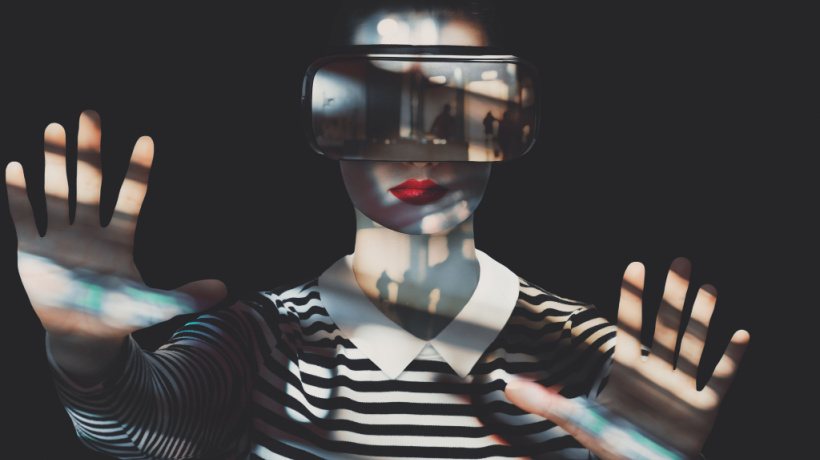From VILT To VR: A Guide For Instructional Designers
In the dynamic world of educational technology, Instructional Designers are pivotal in innovating and enhancing traditional learning methodologies. The integration of cutting-edge technologies, especially Virtual Reality (VR), is revolutionizing the way learners engage with complex and diverse subjects. This article aims to equip Instructional Designers with insights and strategies for effectively transitioning from Virtual Instructor-Led Training (VILT) to VR, ensuring enriched learning experiences and optimized outcomes across various fields.
The transition from VILT to VR is not just a trend but a necessity, driven by the evolving demands of the modern learner and the continuous quest for more engaging, immersive, and effective learning experiences. VR’s ability to create interactive 3D environments opens up endless possibilities, transforming theoretical knowledge into practical, experiential learning.
The Paradigm Shift
Incorporating VR in modern education is not merely a technological enhancement but signifies a paradigm shift. VR’s immersive and interactive nature offers learners an unprecedented opportunity to delve deep into subjects, fostering a richer and more engaging learning experience. This shift is not just about technology but also involves a reimagining of pedagogical approaches, curriculum development, and assessment methods.
For instance, in medical education, VR can simulate surgeries, allowing students to practice and hone their skills in a risk-free environment. In corporate training, VR can simulate real-world scenarios, enabling employees to develop problem-solving skills and decision-making abilities in real time.
Key Performance Indicators (KPIs)
As we navigate this transformative journey, establishing clear KPIs is essential. These indicators will guide the integration process, ensuring the transition is not only smooth but also results in tangible benefits for learners and broader organizational goals.
- Learner engagement
Metrics like time spent, interaction levels, and module completion rates are pivotal in gauging engagement. For example, tracking the frequency and depth of interactions within the VR environment can offer insights into the learners’ engagement levels. - Knowledge retention
Evaluate the retention of information through post-training assessments, comparing pre and post-training scores. The immersive nature of VR can lead to enhanced memory retention, measurable through detailed assessments. - Skill acquisition
Assess the application of acquired skills in simulated or real-world scenarios. VR’s hands-on approach facilitates the practical application of theoretical knowledge, enhancing skill acquisition rates. - Behavior change
Monitor alterations in learner behavior, evaluating both qualitative and quantitative improvements. The immersive learning experiences can lead to more profound behavioral changes, evident in improved performance and productivity. - User Experience
Assess user comfort and adaptability to the immersive VR environment through feedback and observation. Customizing VR environments to cater to diverse learning preferences can enhance User Experience significantly. - Attitude changes
Utilize pre and post-training surveys to measure shifts in attitudes and perceptions. The immersive nature of VR can lead to more profound attitudinal changes, enhancing the overall learning experience. - Cost-effectiveness
Evaluate the ROI by comparing the costs and benefits associated with VR training. While initial investments can be significant, the long-term benefits often outweigh the costs, leading to enhanced cost-effectiveness. - Scalability
Assess the ease of extending VR training across the organization, evaluating the resources and time required. VR’s adaptability makes it a scalable solution, capable of catering to diverse learning needs across large organizations. - Outcome improvement
Monitor the real-world impact, focusing on qualitative and quantitative improvements in performance and results. The enhanced engagement and knowledge retention associated with VR can lead to improved outcomes in various fields.
The Integration Strategy To Transition From VILT To VR
Transitioning from VILT to VR requires a well-crafted strategy. Here are steps to ensure a seamless integration:
Assessment And Planning
- Needs assessment
Identify the specific needs and challenges associated with the current training modules. This involves a detailed analysis of existing content, learning objectives, and learner feedback. - Technology evaluation
Assess the VR technology to ensure alignment with training objectives and learner needs. This includes evaluating the technical specifications, compatibility, and scalability of the VR solutions.
Development And Implementation
- Content development
Create immersive and interactive VR content that addresses the identified needs and challenges. This involves transforming traditional content into interactive VR modules, incorporating elements like 3D models, simulations, and interactive scenarios. - Pilot testing
Implement pilot programs to evaluate effectiveness and make necessary adjustments. Gathering feedback during this phase is crucial to refine the content and ensure it meets the learners’ needs and expectations.
Evaluation And Optimization
- Feedback mechanism
Establish channels for receiving feedback from learners and instructors. This continuous feedback loop is essential to make real-time adjustments and enhance the learning experience. - Continuous improvement
Utilize feedback and KPI data to continuously optimize the VR training modules. This involves regular updates, enhancements, and refinements to ensure the VR content remains relevant, engaging, and effective.
Insights From The Field
In the home healthcare sector, VR is making significant strides, addressing the unique challenges faced by professionals in this field. The technology is tailored to simulate real-world, in-home scenarios, offering hands-on experience in a controlled environment. For instance, VR modules are being developed to train caregivers in managing specific health conditions. A caregiver might, through VR, step into a virtual home environment where they learn to navigate and manage the care of patients with conditions like dementia or mobility issues, adapting to the varied and unpredictable settings of patients’ homes.
Moreover, VR is enhancing skill development in areas like wound care. Caregivers can practice procedures in an immersive VR setting, honing their skills without risk to actual patients. This practical, interactive training approach ensures that caregivers are well-prepared and confident in their abilities.
In the realm of soft skills, VR offers scenarios that help home healthcare professionals develop communication and empathy skills, essential in providing personalized care. These VR simulations offer real-time feedback, allowing caregivers to refine their approach, ensuring both effective communication and enhanced patient comfort. The adaptability of VR ensures that home healthcare professionals can access this innovative training remotely, a crucial feature for an industry characterized by professionals often on the move, ensuring continuous learning and skill enhancement.
Conclusion
The integration of VR in modern training programs is a promising frontier for Instructional Designers. It offers an unprecedented opportunity to enhance the quality of education, fostering a generation of learners equipped with the skills, insights, and adaptability necessary to excel in a rapidly evolving world.
As Instructional Designers, the challenge and opportunity lie in harnessing the power of VR to create learning experiences that are not just informative but profoundly engaging and transformative. The fusion of technology and innovative pedagogy is paving the way for a future where learning transcends traditional boundaries, promising an era of education that is as immersive and interactive as it is enlightening and empowering.








